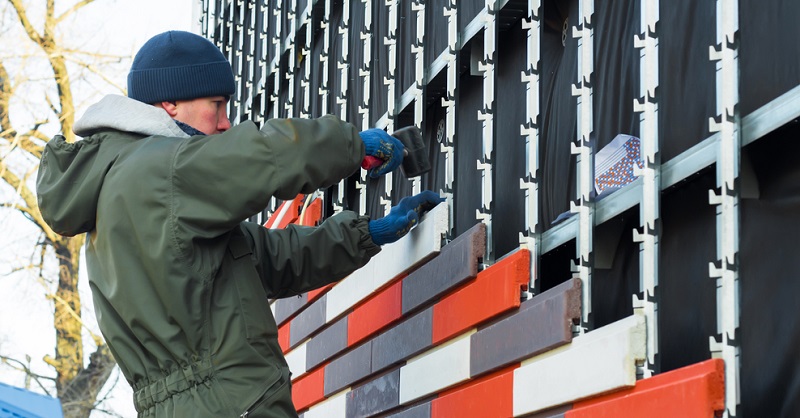
He went on to explain that PAS 9980 is designed to be an additional provider of more detailed information.
The government published PAS 9980 and withdrew the Consolidated Advice Note (CAN) earlier in the year.
The reasoning behind the withdrawal is that the advice was being wrongly interpreted and, as a result, encouraged a cautious approach to building safety in buildings which goes beyond what the government considered necessary.
PAS 9980 is a new code of practice for the fire risk appraisal of external wall construction and the cladding of existing multistorey and multi-occupied residential buildings. It has been developed by a group of experts in the fields of construction, fire, housing and safety.
The code will be used by fire engineers and other competent building professionals when undertaking a fire risk appraisal of external walls (FRAEW).
Adkin added: “The main objective of the code is to assess the fire risk of a block of flats’ external walls.
“The contents of the PAS 9980 could well also be used by third parties involved within either the ownership, construction/refurbishment, or potential ownership the property.”
PAS 9980 uses a five-step risk assessment process to assist in the identification of risk factors affecting the overall risk rating of a building, as well as mitigation steps that might improve the risk rating.
What’s the difference?
By contrast, external wall fire review process forms, known as ‘EWS1’ forms, have been developed by the Royal Institution of Chartered Surveyors, UK Finance and the Building Societies Association to support the valuation process for high-rise residential buildings with cladding.
An EWS1 form is not a government or regulatory requirement, nor is it a building or life safety assessment.
Following the Grenfell Tower tragedy, the government’s Building Safety Programme has mainly focussed on identifying and advising on short term and remedial measures for existing high-rise residential buildings with Aluminium Composite Material (ACM) cladding.
In addition, it has developed wider reforms for the future building safety regulatory system.
While this has improved safety, the balance has not been adjusted correctly as the resulting impact has been a drastic rise in mortgage prisoners.
This is because those currently living in high-rise properties are unable to sell until the building has been assessed. Those living in the properties are also unable to remortgage until this process has been completed, which means many are currently on their lender’s standard variable rates (SVR).
Once a block of flats has been assessed, which comes at great cost to those who live in the building, if it is deemed unsafe they will need to pay to for the removal of the dangerous cladding and refitting of new cladding. Meanwhile, they will continue to be unable to sell or remortgage until this work has been completed.
From a lender’s point of view, Adkin said that any reports or documents containing accurate information will help potential borrowing as well as securitisation or balance sheet holding.
“Particularly when properties with cladding are of current concern in the market,” he added.
For lenders, the main concern is the property being approved as safe before progressing with an application. This is because if it is deemed unsafe, the property is effectively worth nothing until the dangerous cladding has been removed and new cladding has been fitted.
Adkin explained that, from a broker’s point of view, PAS 9980 may well be ‘another item’ that brokers need to obtain for borrowing to be granted by the lender, or simply one they make their clients aware of.
“Either way, brokers need to be aware of the features and benefits of the PAS 9980 contents and its purpose,” he added.
Understanding the latest building safety instructions is essential for brokers as customers need to be aware of this information in order to make an informed decision on their property or their future property.
Adkin went on to say that, regardless of any further work that is required of lenders or brokers, any progress around the cladding crisis is welcomed.



